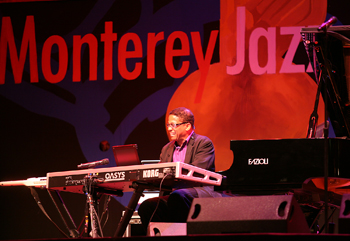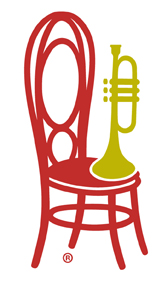
Monterey Jazz Festival partners with Monterey-Salinas Transit BRT project
By David Hubbard

Monterey-Salinas Transit (MST) is partnering with the world-renowned Monterey Jazz Festival to make the ride through Monterey fast and considerably more hip.
When the project is completed in 2012, a new bus rapid transit line will whisk daily commuters and tourists from one end of Monterey to the other, and provide them with an entertaining jazz education along the way.
MST and the Festival are working together to create this new service as a year-round living jazz museum that will feature dramatic new jazz themed transit displays along the route and on the buses, which will be a mix of 35- and 40-ft low-floor Gilligs.
MST will debut a sample of its jazz shelters and decked out vehicles during the Monterey Jazz Festival this fall on the weekend of September 16-18. The agency says it will unveil the complete presentation in April 2012 , just prior to the festival’s Next Generation Jazz Festival.
“We are incorporating the sights and sounds of the Monterey Jazz Festival into the transit experience,” says MST Assistant General Manager Hunter Harvath. “To show our proud association with such a world-class event, each BRT shelter along the route, as well as our upgraded transit buses, will feature museum-style presentations of the history of the legendary Monterey Jazz Festival.
While the Festival has worked closely with MST to address transportation issues at the Festival, this opportunity to build creatively on the relationship is especially inviting.
“MST played an integral role in the success of the shuttle service for festival patrons and this new line is a natural progression of that partnership,” says Monterey Jazz Festival Marketing Associate Timothy Orr. “We’re excited and honored to have MST showcase the festival’s past and future to the public and to share what the Monterey Jazz Festival is all about, all year long!”
The Monterey Jazz Festival has opened its archives for the project, and Orr says its designer is overseeing the development of the displays for the new stops and updated coaches. As it distinguishes the rapid transit buses from MST’s regular route vehicles, the new design will also extend the Monterey Jazz Festival brand through this significant cultural contribution to the community.
According to MST statistics, day routes serving the Monterey County Fairgrounds carry an average of 20 passengers per hour. However, during Festival events that number jumps to over 100 passengers per hour. The new BRT line intends to enhance those trips for the thousands of commuters each day with this new cultural boost.
“The premise of BRT is that buses operate more like trains, offering premium services for riders and easing traffic congestion for everyone else,” says MST General Manager Carl Sedoryk. “Ultimately, the benefits are not just for festival-goers and people using transit, but also for those who live in and around transit stations.”

He says passengers on the new line will purchase tickets before boarding to speed up the process. If a bus is running behind schedule, automatic vehicle location software will send a message that extends green lights to speed the flow of traffic. Special jump lanes along Fremont and Lighthouse Avenues will allow buses to move more quickly through crowded streets.
“As buses move more efficiently so do the automobiles following behind that are normally slowed as well,” says Sedoryk. “Our traffic models anticipate this new system will cut bus travel time between the Monterey Bay Aquarium and Sand City by 25 percent, while speeding up regular auto traffic along the same route by 10 percent.”
MST received approximately $2.7 million in Smart Starts program funds from the Federal Transit Administration to fully-fund the project, along with $700,000 in state transportation bonds. BR
